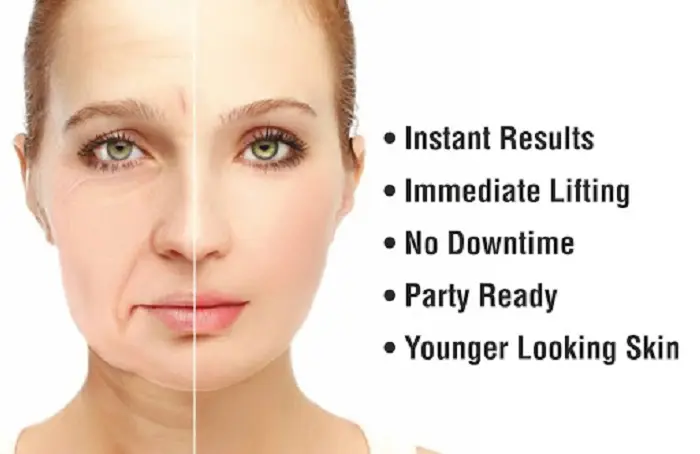
Are you trying to find ways to tighten your skin, get rid of wrinkles, or both?
You’re not alone. Millions of people pick easy treatments to improve the appearance of their skin every year.
In 2020, Botox was the most popular cosmetic treatment, followed by soft tissue fillers and chemical peels.
2020 saw a total of 13.2 million cosmetic operations performed without surgery and 2.3 million with surgery. This is understandable, given that these therapies often have lower costs and shorter recovery times.
Let’s discuss the benefits of some non-surgical techniques for achieving a younger-looking face.
What is a Non-Surgical Facelift?
An alternative to surgical facelifts, non-surgical facelifts temporarily rejuvenate, firm, and plump the skin of the face.
There is no need for general anesthesia, long hospital stays, or large incisions in such procedures. A non-surgical facelift often combines several non-invasive techniques and treatments.
According to Dr. Elizabeth Geddes-Bruce, a board-certified dermatologist at Westlake Dermatology, aging involves more than just skin sagging. She points out that losing volume in your face is also a big factor in premature aging.
“A surgical facelift can’t address all the fine lines and crepey skin texture that come with aging. That’s where fillers and skin resurfacing tools like lasers play a role,” she explains.
A surgical facelift, sometimes called a rhytidectomy, involves making incisions to tighten the skin on your face and neck.
| Aspect | Non-Surgical Facelift | Surgical Facelift |
| Procedure | No incisions usually involve injections or ultrasound/laser therapy | Requires incisions to lift and tighten skin, possibly repositioning fat or adjusting facial muscles |
| Anaesthesia | Typically local anaesthesia or no anaesthesia | General anaesthesia |
| Hospital Stay | Outpatient procedure, no overnight stay | No incisions usually involves injections or ultrasound/laser therapy |
| Recovery Time | Minimal downtime, quick recovery | Longer recovery time, about 1-2 weeks |
| Results | Temporary, may last up to 1-2 years | Permanent, long-lasting results |
| Suitability | Mild to moderate skin laxity | Moderate to severe skin laxity |
| Cost | Generally lower cost compared to surgery | Higher cost compared to non-surgical options |
Repositioning fat or adjusting facial muscles are possible outcomes of a surgical facelift. You will spend the night in the hospital after this kind of treatment, which calls for general anaesthesia.
If you have ageing skin on your face, cosmetic surgery is a more substantial and permanent solution.
Results from non-surgical therapies are often just transient.
Who should get non-surgical facelifts?
A non-surgical facelift can be an option for those who are worried about ageing skin or any of the following typical concerns with the skin on their faces:
- The skin around your jawline and face is starting to loosen and droop.
- Shadows across your eyes.
- Sunken-looking cheeks.
- Thinning lips.
- Lines that crease your forehead, crow’s feet at the corners of your eyes, and marionette lines on the sides of your lips are examples of wrinkles.
How is a Non-Surgical Facelift Performed?
Your non-surgical facelift type will determine the procedures you need to undergo. The majority of them take place at the doctor’s office itself.
While some may not hurt too much, some could cause a little discomfort. You can get additional information about what to anticipate from these therapies from your provider:
Botulinum Toxin Injections
Studies show that these injections, such as Dysport® and Botox®, relax the tense muscles that lead to wrinkles.
The majority of people often get these injections around the corners of their eyes, on their forehead, or in the space between their eyebrows. The effects can last for up to three months.
Chemical Peels
A chemical peel removes the outer layer of skin. Chemicals are employed to remove the outermost layers of your skin.
Chemical peels can minimize wrinkles, reduce pore size, and promote tighter, more youthful skin. To get the desired results, some people may need several chemical peel sessions.
Dermal Fillers
Fillers for the face are injections of chemicals like hyaluronic acid or gel, which help restore volume to regions that have lost it.
You can get fuller lips and cheeks using dermal fillers, and they can even hide deep creases. This filler’s longevity can vary from 6 months to a few years.
Fat Injections
Fat injections, often called fat grafting, are a way to rejuvenate drooping facial areas by transferring fat from another area of the body.
Liposuction-based fillers are more intrusive than dermal fillers because they remove fat from the body, but they typically last longer.
Laser Skin Resurfacing
Strong light beams concentrate on certain features of your face. The outermost, older layers of your skin are removed during this therapy.
Collagen grows due to the heat from the lights. Your skin looks tighter and smoother after laser skin resurfacing.
Microdermabrasion
This sensitive process involves the removal of skin layers using a rough pad. Exfoliation using microdermabrasion helps minimize the appearance of fine wrinkles, small scars, and other skin problems.
Several treatments, generally given a few weeks apart, are necessary. The outcomes often last for a few months.
Microneedling
The small punctures made by the needles leave a scar on your face. The process of microneedling stimulates the production of skin-loving collagen and elastin.
It can act as a remedy for UV damage, sagging skin, wrinkles, and big pores. Multiple treatments, spaced three to eight weeks apart, may be necessary. The positive effect of the treatment will take another three to six months to manifest.
What are the Benefits of a Non-Surgical Facelift?
You can get tighter, smoother, and younger-looking skin without surgery by having a non-surgical facelift.
There won’t be any overnight hospital stays or general anaesthesia to contend with. In addition, compared to surgery, recuperation is shorter and less painful.
Compared to surgical cosmetic treatments, non-surgical facelifts are often much less expensive.